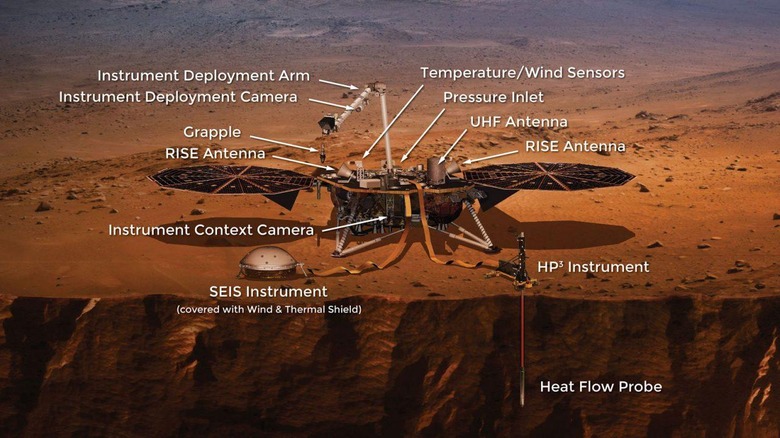NASA Is Sending A Seismology Spacecraft To Mars: Here's Why
NASA will launch a groundbreaking mission to Mars this Saturday, sending a new spacecraft to the red planet for the first time since 2012. The NASA InSight lander – short for Interior Exploration using Seismic Investigations, Geodesy and Heat Transport – aims to drill into Mars' crust, tracking seismic activity that might unlock new secrets about our own planet.
NASA is describing these shudders as "Marsquakes," and says they could tell us plenty about the processes which formed Earth roughly 4.5 billion years ago. While Earth's molten rock mantel and frequent quakes have made figuring out that progression tricky, Mars is less geologically active. That could mean a more direct link between its current condition and how it initially formed will be easier to track.
The InSight lander will carry with it three main instruments. The seismometer, or SEIS, will measure the internal vibrations of Mars, helping scientists figure out the various properties of the core, mantle, and crust. It resembles a small, squat dome, and will be managed primarily by the Institute of Earth Physics of Paris, in France.
Then there's the HP3, or heat probe. That will drill down into the surface of the red planet, to a depth of almost sixteen feet. It's the deepest any probe on Mars has reached. Along the way, scientists expect to use it to figure out how much heat emerges from the body of the planet, in addition to what the source of that heat is.

"This helps scientists determine whether Mars formed from the same stuff as Earth and the Moon," NASA points out, "and gives them a sneak peek into how the planet evolved." It'll be mounted on the lander deck of the InSight spacecraft, and then deployed via the robotic arm onto the surface. Then, it'll hammer itself underneath. It's being managed by the German Aerospace Center, in Berlin, Germany.
Finally, there's RISE, or the radio science instrument. That's a set of two medium-gain "horn" antennas that are mounted on the lander deck, along with an X-band radio transponder and transmitter in the equipment bay. Together, they'll track the wobble of the Martian North Pole, as it's pushed and pulled by the orbit of the sun. The goal is to use that data to figure out the size and composition of the planet's core.
If all goes to plan, InSight should land on November 26, at Elysium Planitia, a flat expanse on the planet. For the first two months it'll be a careful deployment of the various instruments. After that, for around two years InSight is expected to track as many as a dozen Marsquakes, which could reach around 6 or 8 on the Richter scale.
